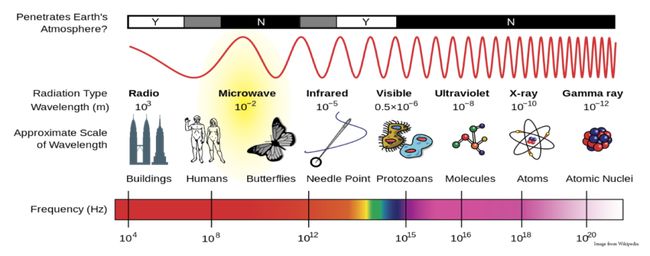Radiation refers to the transfer of energy in space and other media, in the form of electromagnetic waves, particle streams, etc. According to the effect of radiation, it can be divided into two types: ionizing radiation and non-ionizing radiation. Ionizing radiation is electromagnetic radiation (such as X-rays, gamma rays) or particle radiation (such as alpha, beta, high-speed electrons, high-speed protons, and other particles) that ionize matter. Electromagnetic waves with wavelengths greater than 100 nanometers are called non-ionizing radiation, such as light and ultrasonic waves, because of their low energy and cannot cause ionization of water and body tissues.

So what is radiation?
Radiation can be divided into ionizing radiation and non-ionizing radiation.
Radiation such as the atomic bomb, the Japanese nuclear leak, and Chernobyl is called ionizing radiation, generally called radiation, such as alpha rays, beta rays, X-ray-roentgen rays, etc., which are what people usually talk about. Real murderer. It destroys the cell structure of the organism and is one of the causes of cancer.
Compared with the panic of ionizing radiation, the electromagnetic radiation generated by electric fans, mobile phones, induction cookers, and other electrical appliances in daily life, as well as communication base stations, belongs to the scope of non-ionizing radiation.
Radiation is inherent, and the ionizing radiation received by humans includes natural radiation and artificial radiation. Natural radiation comes from cosmic rays, radioactivity from food intake, and primary radiation; artificial radiation comes from medical exposure and nuclear technology applications. Regarding ionizing radiation, the report of the United Nations Scientific Committee on Atomic Radiation Effects pointed out that the annual average radiation dose of natural background radiation to individuals is about 2.4mSv/year. The international standard "International Basic Safety Standards for Ionizing Radiation Protection and the Safety of Radiation Sources (IAEA No. 115)" and my country's national standard "Basic Standards for Ionizing Radiation Protection and the Safety of Radiation Sources (GB18871-2002)" stipulate: The average annual effective dose to the public The limit is 1 mSv/year; the annual average effective dose limit for radiation workers is 20 mSv/year [1]. Compared with the natural background, the public's annual dose limit is lower than the average annual dose of natural background radiation; the annual dose limit of radiation workers is higher than the average annual dose of natural background radiation. [1] The dose limit in the standard does not include natural background dose and medical dose. mSv is the equivalent dose per unit of radiation dose and is pronounced in Chinese as millisievert.
The reference value of radiation dose is listed below:
Abdominal CT 10mSv
Pelvis CT 10mSv
Chest CT 8mSv
Skull CT 2mSv
A chest X-ray is about 1.1mSv
0.1mSv for a 20-hour flight
Smoking 20 cigarettes a day, the annual dose is 0.5-1mSv
One dose of chest radiograph 0.2mSv
Passengers in subway security screening may receive a dose of <0.01mSv each year


What is the level of radiation dose related to our daily life?-Safeagle
Fill out more information, We will get back to you within 24 hours.
4F.,Bldg. B, Jin Hao Pioneer Park, No.9 Dafu Industrial Zone, Aobei Community, Guanlan St., Longhua Dist., Shenzhen, R.P.China
Sales@Safeagle.com
Telephone : 86-0755-82373580
Business Phone : 86-0755-82373580
Work Time :9:00-18:30(Beijing time)